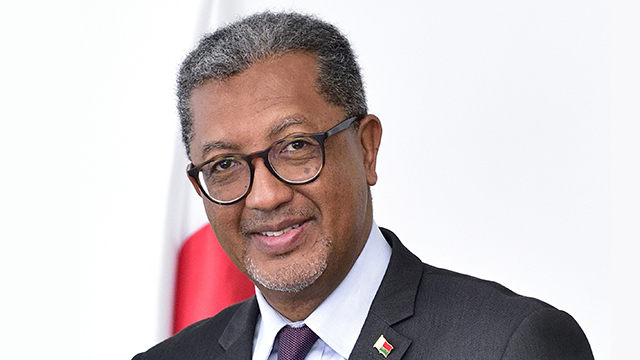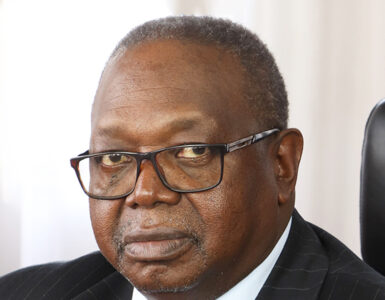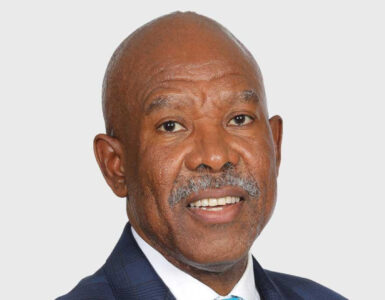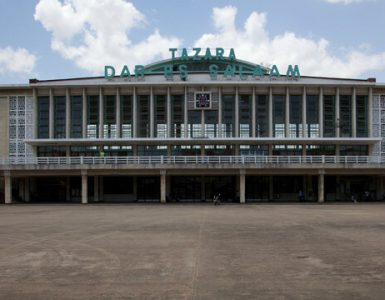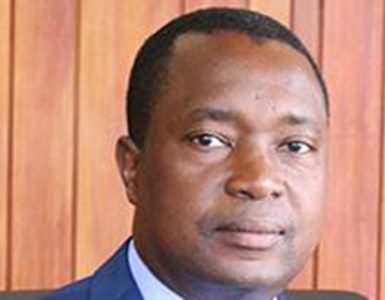Weak fiscal revenue generation and dependence on external financing are the main sources of vulnerability of future sustainability of public debt in Madagascar[5]. The budget deficit is projected to have declined slightly to an annual average of –MGA 2.0 billion from 2019 to 2022[6] (2018: -MGA 2.1 billion)[7]. In addition, external public debt has increased from an annual average of 29.3% of GDP (71.2% of total debt) from 2015[8] to 2017, to 30.2% of GDP (76.1% of total debt) in 2018[9]. The high dependence on external debt therefore exposes Madagascar’s public debt sustainability to exchange rate risk.

The political crisis that lasted from 2008 to 2013 forced the government to borrow from domestic sources after development partners reduced their lending to Madagascar. The restoration of political stability in 2014 unlocked external sources of funds and enabled the government to re-engage with its international donors. As a result, in the forward-looking medium-term, nominal external debt is projected to increase from 30.2% of GDP in 2018 to an average of 35.5% of GDP from 2019 to 2023[10].
Total public debt is projected to increase from 39.7% of GDP in 2018, to an annual average of 43.5% of GDP from 2019 to 2023[11]. This moderate increase in public debt is primarily driven by growing reliance on external public debt. Domestic public debt is projected to moderate from 9.5% of GDP in 2018 to an annual average of 7.9% of GDP from 2019 to 2024[12]. The increasing dependence on external public debt exposes Madagascar’s public debt management to exchange rate risk.
Madagascar’s public debt in 2018 has remained well below the SADC’s public debt threshold of 60.0% of GDP[13]. Public debt is expected to rise mainly due to the increased external debt, even though Madagascar’s public debt levels are projected to remain well below the SADC threshold. The Madagascan government is expected to take advantage of the improved donor relations in order to seek external concessional financing while borrowing less from its domestic market. However, the Madagascan Ariary has been depreciating against major currencies with the MGA depreciating by -7.7% against the USD and -3.0% against the EUR from 2015 to 2017[14]. In 2018 the MGA continued depreciating by -6.6% against the USD and -10.6% against the EUR[15]. In view of the depreciating Ariary, Madagascar’s cost of servicing its external debt is also growing.
Madagascar has a domestic public debt target of 38.0% of GDP[16] but its domestic public sector debt was valued at 9.5% of GDP in 2018 and is projected to decrease slightly to an average of 8.1% of GDP from 2019 to 2023[17]. Therefore, the government of Madagascar has room to increase its domestic borrowing which does not expose the country to the risk of exchange rate fluctuations. It is therefore in the economic interest of Madagascar to reduce external borrowing and increase domestic borrowing as the cost servicing of the domestic debt will be done in domestic currency which is not affected by the persistent MGA depreciation.
The foregone analysis of total public debt provides a general perspective on the macro sustainability of Madagascar’s public debt. However, a deeper analysis of other sustainability indicators is needed to clearly understand the underlying sustainability of Madagascar’s public debt. The debt-service to revenue ratio averaged 22.3% for the period from 2015 to 2017, which is expected to have declined to 18.9% in 2018[18]. This translates to a decline in the cost of servicing Madagascar’s public debt which support debt sustainability. In the forward-looking medium-term from 2019 to 2023, the debt-service to revenue ratio is projected to continue declining to an average of 18.0% over the period[19]. Therefore, public debt-servicing costs are expected to continue declining which should provide room for the government of Madagascar to increase its capital expenditure or accumulate fiscal buffers. Fortunately, Madagascar has been able to take advantage of strong GDP growth performance to improve its public debt sustainability.
Madagascar’s real GDP growth rate increased from an average of 3.9% from 2015 to 2017, to 5.2% in 2018. Meanwhile, the effective interest rate increased from an average of 0.6% from 2015 to 2017, to 0.9% in 2018[20]. Therefore, Madagascar has been able to secure sufficient concessional or low-interest public debt which enables medium- and long-term public debt sustainability. This is precisely the condition that enables Madagascar to maintain sustainable public debt because the government is “growing” out of its debt. Real GDP growth is projected to increase to an average of 5.2% from 2019 to 2021 whilst the effective interest rate is projected to average 1.0% over the same period[21]. The lower effective interest rates compared to real growth rate means the country has sustainable public debt as the economy grows leading to broadening of the government’s revenue base enabling the government to service its public debt or clear arrears.
In conclusion, although Madagascar’s has maintained public debt levels below the domestic and SADC public debt thresholds, its future sustainability looks moderate. Madagascar’s external debt ratios are expected to slightly increase from an average of 71.2% (2015-2017) of the total debt to 76.1% of the total debt in 2018[22]. This reveals an increase in reliance on external debt with an effect of increasing pressure on international foreign reverses. Although the country has future reserves higher than 4 months of imports in international reserves and an increasing real GDP growth rate, debt servicing ratios will be negatively affected by the constant depreciation of the MGA against major currencies. In 2019, the Madagascar Ariary has already depreciated by an average of -5.8% and -2.1% against the USD and EUR as at the end of March. In face of the depreciating MGA which negatively affects its foreign currency reserves, the government of Madagascar runs a risk of failing to sustain its public debt in the long run. However, the country has the option of increasing its domestic debt while reducing external borrowing while improving its revenue collection, improve exports to accumulate foreign exchange reserves, and maintain a real GDP growth rate that is above the effective interest rate in order to maintain or improve its debt sustainability. An improved economic performance will ensure that there is enough low-cost financing from the domestic market which currently does not have sufficient resources for the government to rely on for borrowing.
[1] IMF 2017a. Madagascar 2017 Article IV Consultation Report, International Monetary Fund: Washington D. C. Available At: www.imf.org/ [Last Accessed: 31 May 2019].
[2] IMF 2017b. Madagascar Second Review Under the Extended Credit Facility, International Monetary Fund: Washington D. C. Available At: www.imf.org/ [Last Accessed: 03 June 2019].
[3] IMF 2019. Madagascar Fourth Review Under the Extended Credit Facility, International Monetary Fund: Washington D. C. Available At: www.imf.org/ [Last Accessed: 03 June 2019].
[4] IMF 2019. Madagascar Fourth Review Under the Extended Credit Facility, ibid.
[5] IMF 2016. Republic of Madagascar: Request for an Arrangement under the Extended Credit Facility; First Review under the Staff Monitored Program—Debt Sustainability Analysis, International Monetary Fund: Washington D. C. Available At: www.imf.org/ [Last Accessed: 25 January 2019].
[6] IMF 2019. Madagascar Fourth Review Under the Extended Credit Facility, ibid.
[7] IMF 2018. Madagascar Third Review Under the Extended Credit Facility, International Monetary Fund: Washington D. C. Available At: www.imf.org/ [Last Accessed: 31 May 2019].
[8] IMF 2017a. Madagascar 2017 Article IV Consultation Report, ibid.
[9] IMF 2019. Madagascar Fourth Review Under the Extended Credit Facility, ibid.
[10] IMF 2019. Madagascar Fourth Review Under the Extended Credit Facility, ibid.
[11] IMF 2019. Madagascar Fourth Review Under the Extended Credit Facility, ibid.
[12] IMF 2019. Madagascar Fourth Review Under the Extended Credit Facility, ibid.
[13] AFRODAD 2014. An Overview of Domestic Debt in SADC: A Synthesis of Trends, Structure and Development Impacts, African Forum and Network on Debt and Development: Harare. Available At: www.africaportal.org/ [Last Accessed: 30 May 2019].
[14] CBM 2019. Foreign Exchange Market, Central Bank of Madagascar: Antananarivo. Available At: https://www.banky-foibe.mg/ [Last Accessed: 8 May 2019].
[15] CBM 2019. Foreign Exchange Market, ibid.
[16] WB 2018. Madagascar – Joint Bank-Fund Debt Sustainability Analysis: 2018 Update, International Development Association: Washington, D. C. Available At: http://documents.worldbank.org/ [Last Accessed: 3 June 2019].
[17] IMF 2019. Madagascar Fourth Review Under the Extended Credit Facility, ibid.
[18] IMF 2017a. Madagascar 2017 Article IV Consultation Report, ibid
[19] IMF 2017a. Madagascar 2017 Article IV Consultation Report, ibid.
[20] IMF 2017b. Madagascar Second Review Under the Extended Credit Facility, ibid.
[21] IMF 2017b. Madagascar Second Review Under the Extended Credit Facility, ibid.
[22] CBM 2019. Foreign Exchange Market, ibid.

